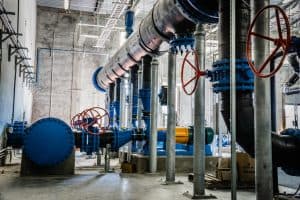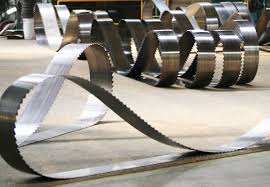Tech Tips
Advanced Fluid Dynamic Tips for Home Water Treatment Systems
Not all home improvement projects require tinkering with your water supply, but if you’re engaged in one that does, such as fitting a home water treatment system, which are becoming increasingly popular, you’ll need to make sure you’re doing it right.
Home water treatment systems allow you to monitor your water flow – including volume, viscosity, and density – so that you’re always aware of the constitution of the fluid working its way through your pipes. If you’re not familiar with the physics behind water systems, read on for the basics so you can make sure your water treatment system is right for your home and to help you keep it running in tip-top condition.
The Supply
Let’s first look at the supply of water in your system. There are two types of system when it comes to hydraulic mechanics: there are closed systems that simply use and recycle the same water supply, and there are open systems, through which water flows and wastewater exits.
In the former, you have far more control over the quality of your water, the volume that you are working with, and the pressure that you’re creating. In a closed system, you can use equations to reliably calculate these parameters. But open systems are more challenging to configure – including those which deliver water for your baths, showers and wash basins.
Measuring flow
For open systems, measurements are likely to vary as the flow of water through your home is variable. Most domestic water systems are liable to contamination, volume issues, and pressure oscillation, which means that you’re never quite sure what your water’s doing in your pipes.
To measure your water accurately – and this piece of kit is at the very cutting edge of open water flow management – you’re going to want to use ultrasonic flow meters. These meters use sonic measurements in order to ascertain how the flow is moving through your pipes – perfect for up-to-date measurements regarding the water you’re using.
Purity and filtration
Meanwhile, the purity of your water at home is another concern – for domestic uses, for your safe consumption, and for any uses in machines and white goods that you’re using in your home. Unclean water, and water containing sediment, can be harmful across your domestic water use cases – and requires dealing with in order to treat your home’s water right.
By installing a filter at the point at which your water supply connects to your machine or your drinking water system, you’ll guarantee that all of the water that flows out is filtered. These machines often have valves to prevent backflow, and require minimal cleaning and maintenance.
Math and equations
Finally, there are some reliable mathematical formulae when it comes to measuring fluid dynamics. You may well have learned them on your engineering or math courses in the past, but it’s worth revisiting them now in case you can perform some magic science in your home and on your water systems.
There you have it: four important tips to bear in mind if you’re making a machine that requires a flow of water to operate and function.







